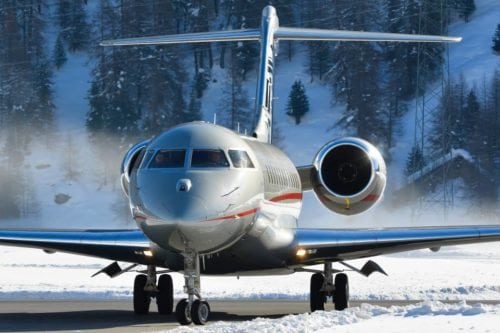
Photo courtesy of VistaJet
VistaJet is increasing its U.S.-based fleet of Global and Challenger business jets by 50% after seeing demand surge for its service in the third quarter.
During the third quarter of 2017, VistaJet recorded a 30% increase in year-over-year flight departures out of North America. Flight hours sold to its program members grew significantly over the third quarter as well, with an increase of 210% compared to 2016. The company also saw a 45% increase in new U.S. passengers during that period.
VistaJet North America’s president, Ron Silverman, told Avionics at the NBAA convention that he believes a lot of the growth is due to what VistaJet sees as a new trend in private aviation, with customers moving away from fractional ownership toward paying only for the flight hours they want to use.
“What’s happening is people in the U.S. are starting to get educated and realize what shared economy means, in that they don’t have to own their own airplane, they don’t have to own a fraction of an airplane,” said Silverman.
He said more corporate aviation passengers are also favoring VistaJet’s option to go “asset free” and shed what he sees as the financial risk involved in owning a private jet. Through the first six months of 2017, VistaJet had recorded 6,000 new annual subscription hours and 59% of U.S.-based customers.
Other private jet operators that are seeing success with more of the on-demand, shared-economy style of flying includes NetJets, which is considered the fifth largest airline with 700 jets. XOJET is also seeing increased success with more customers using its app to book on-demand flights.
VistaJet has also invested in personalizing the in-flight entertainment and connectivity (IFEC) experience for passengers. Every seat on the airplane features iPads preloaded with content personalized to each passenger’s preference and a satellite phone for in-flight calling.
Silverman previously discussed the capabilities of in-flight internet on VistaJet’s aircraft.
“Keep in mind you’re in a tube moving 600 miles an hour trying to connect to a satellite that’s spinning around the earth, and there are times where you obviously go through zones and switch satellites,” said Silverman. “Wi-Fi on airplanes has not reached the point yet where it is the same Wi-Fi that you and I have in our home or our office, although technology is getting there.”
The Malta-based operator is also currently evaluating more options for its iPads, including giving passengers the option to download a selection of up to 5,000 newspapers and magazines.